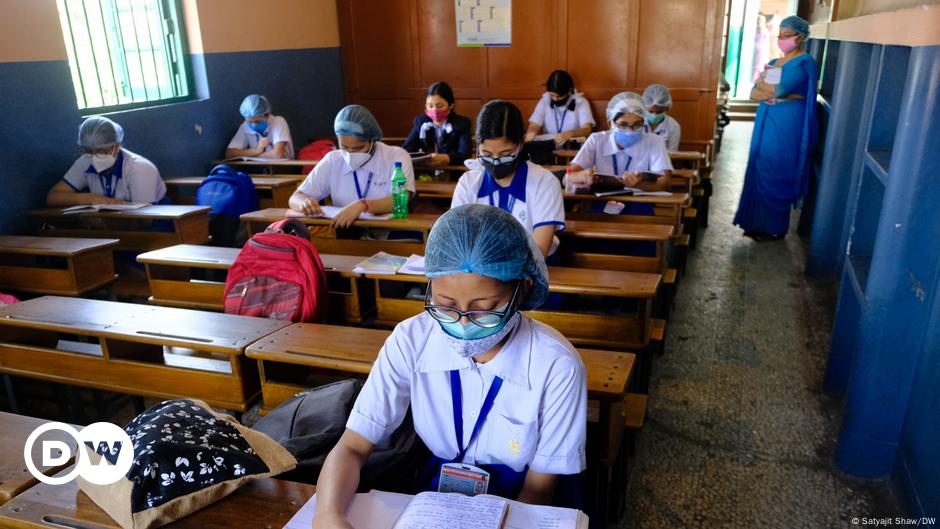
Raghav Paswan, a vegetable vendor from eastern Delhi has two school-age children, 12-year-old Vinita and 9-year-old Gita, who have not gone to school for the last two years because of the pandemic.
Paswan’s meager income has dropped further during the pandemic, to the point that he could barely support the family’s food needs, meaning no money left to see his children through school.
The children dropped out of school, took up odd jobs and started working alongside their parents to financially support the family.
“There was no option, and I dropped out of school because of the circumstances at home. I don’t know when I will return,” Vinita told DW.
This is not an isolated case. Millions of schoolchildren in India, especially from poor families, have dropped out of school over the past two years because of the COVID health emergency and the resulting economic crisis.
Millions cut off from education
Schools across India were shut in March 2020 to curb the spread of the coronavirus. There are varying estimates as to how many children have been affected, and to what extent.
UNICEF estimated that the school closures affected about 250 million children in India.
A survey of nearly 1,400 schoolchildren done by a scholars’ group found that in rural areas, only 8% were studying online regularly, 37% were not studying at all, and about half were unable to read more than a few words.
Most parents wanted schools to reopen as soon as possible, it said.
The figure for dropouts at the secondary school level was as high as 17%, according to the Unified District Information System for Education.
And then there are children who have never been enrolled.
“First, relatively speaking, the higher proportion of children who are currently not enrolled in the younger age groups may be due to the fact that parents are waiting for schools to open and the fear of infection to subside before enrolling their children in school,” Rukmini Banerji, CEO of Pratham Education Foundation, told DW.
“But, for observing whether these increased enrollments translate into sustained attendance, timely data collection will be needed along with public availability of attendance data,” Banerji said.
Digital divide aggravates problem
Girls have been particularly affected by the school closures. According to the National Right to Education forum’s policy brief, 10 million girls could drop out of secondary school.
The organization warned that the pandemic could also disproportionately impact girls by putting them at risk of early marriage, early pregnancy, poverty, trafficking and violence.
According to UNESCO, the duration of school closures in India has been among the longest in the world.
Though classes were moved online, millions of children from poor families were left disadvantaged as they did not have access to digital devices and the internet.
Children in the slums who went to regular schools pre-pandemic often have families that are too poor to afford the phones or other devices needed to study online.
The digital divide aggravated inequality in access to and quality of school education.
“Online education is not an option for all as only one in four children has access to digital devices and internet connectivity. Pre-COVID, only a quarter of households (24%) in India had access to the internet and there is a large rural-urban and gender divide,” UNICEF said in a statement in March.
Government vows to bring down dropout rate
When schools gradually began reopening, many children did not return.
At the same time, several surveys showed that the incidence of child labor had shot up, as had rates of child marriage.
“COVID and the related lockdowns revealed several truths about societal and state concern for education and the overall well-being of children, especially of poor and marginalized communities,” Shantha Sinha, former chairperson of the National Commission for Protection of Child Rights, told DW.
“The cost of inaction has been tremendous, causing denial of rights and injustice to children. There is undoubtedly a need to pay special attention to make schools the hub of activities for children and bring back the rhythm of schools,” Sinha said.
Earlier in December, the government announced that it was aiming to ensure 100% enrollment of children in schools across India in the coming years and vowed to bring down the school dropout rate.
Edited by: Srinivas Mazumdaru
COVID in India: School closures, digital divide affect millions
Source: Pinoy Pop News
0 Comments